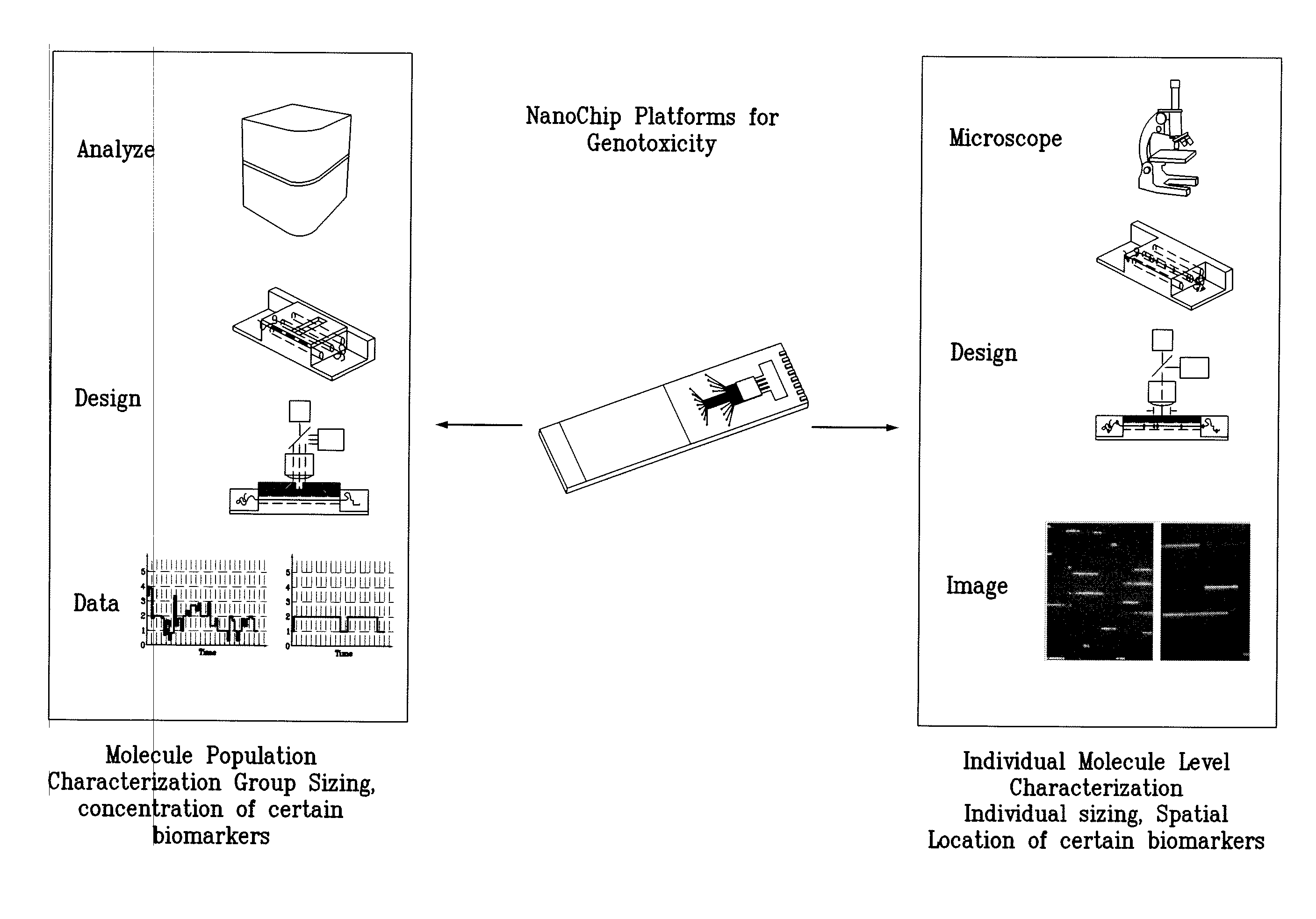Methods of macromolecular analysis using nanochannel arrays
a nanochannel array and macromolecular technology, applied in the field of nanoscale devices, can solve the problems of dna damage in the form of gene mutation, affecting the general analysis of large genomic regions, and taking on average 7-10 years and 800 million dollars to bring a new drug,
- Summary
- Abstract
- Description
- Claims
- Application Information
AI Technical Summary
Benefits of technology
Problems solved by technology
Method used
Image
Examples
example 1
[0154]A silicon substrate having a plurality of parallel linear channels that had an 100 nm trench width and a 100 nm trench height was provided. These channel openings were sputtered at a gas pressure of 5 mTorr according to the general procedures given above. The sputter deposition time was 10-25 minutes to provide a nanochannel array that can range from not completely sealed to completely sealed. Silicon dioxide was deposited by an e-beam (thermo) evaporator (Temescal BJD-1800) onto the substrate. The substrate was placed at various angles incident to the depositing beam from the silicon dioxide source target; the deposition rate can be set to about 3 nm / minute and 150 nm of sealing material was deposited in about 50 minutes. The angle of the incident depositing beam of sealing material could be varied to reduce the channel width and height to less than 150 nm and 150 nm, respectively, and to substantially sealed by providing shallow tangential deposition angles.
example 2
[0155]In this example, a nanochannel array was contacted with a surface-modifying agent. A nanochannel array made according to Example 1 can be submerged in a surface-modifying agents solutions containing polyethelyene glycol inside a vaccum chamber to facilitate wetting and treatment of the channels and degas the air bubbles that might be trapped inside the nanochannels.
example 3
[0156]This example describes how to provide a sample reservoir with a nanochannel array to provide a nanofluidic chip. A nanochannel array having 100 nm wide, 100 nm deep nanochannels was made according to general procedures of Example 1. The nanochannel array was spin-coated with a photoresist and imaged with a photomask to provide regions on opposite ends of the channel array. The exposed areas were etched using reactive ion etching to expose the nanochannel ends and to provide a micron-deep reservoir about a millimeter wide on the opposite ends of the channels at the edge of the substrate.
PUM
| Property | Measurement | Unit |
|---|---|---|
| length | aaaaa | aaaaa |
| length | aaaaa | aaaaa |
| length | aaaaa | aaaaa |
Abstract
Description
Claims
Application Information
 Login to View More
Login to View More - R&D Engineer
- R&D Manager
- IP Professional
- Industry Leading Data Capabilities
- Powerful AI technology
- Patent DNA Extraction
Browse by: Latest US Patents, China's latest patents, Technical Efficacy Thesaurus, Application Domain, Technology Topic, Popular Technical Reports.
© 2024 PatSnap. All rights reserved.Legal|Privacy policy|Modern Slavery Act Transparency Statement|Sitemap|About US| Contact US: [email protected]










